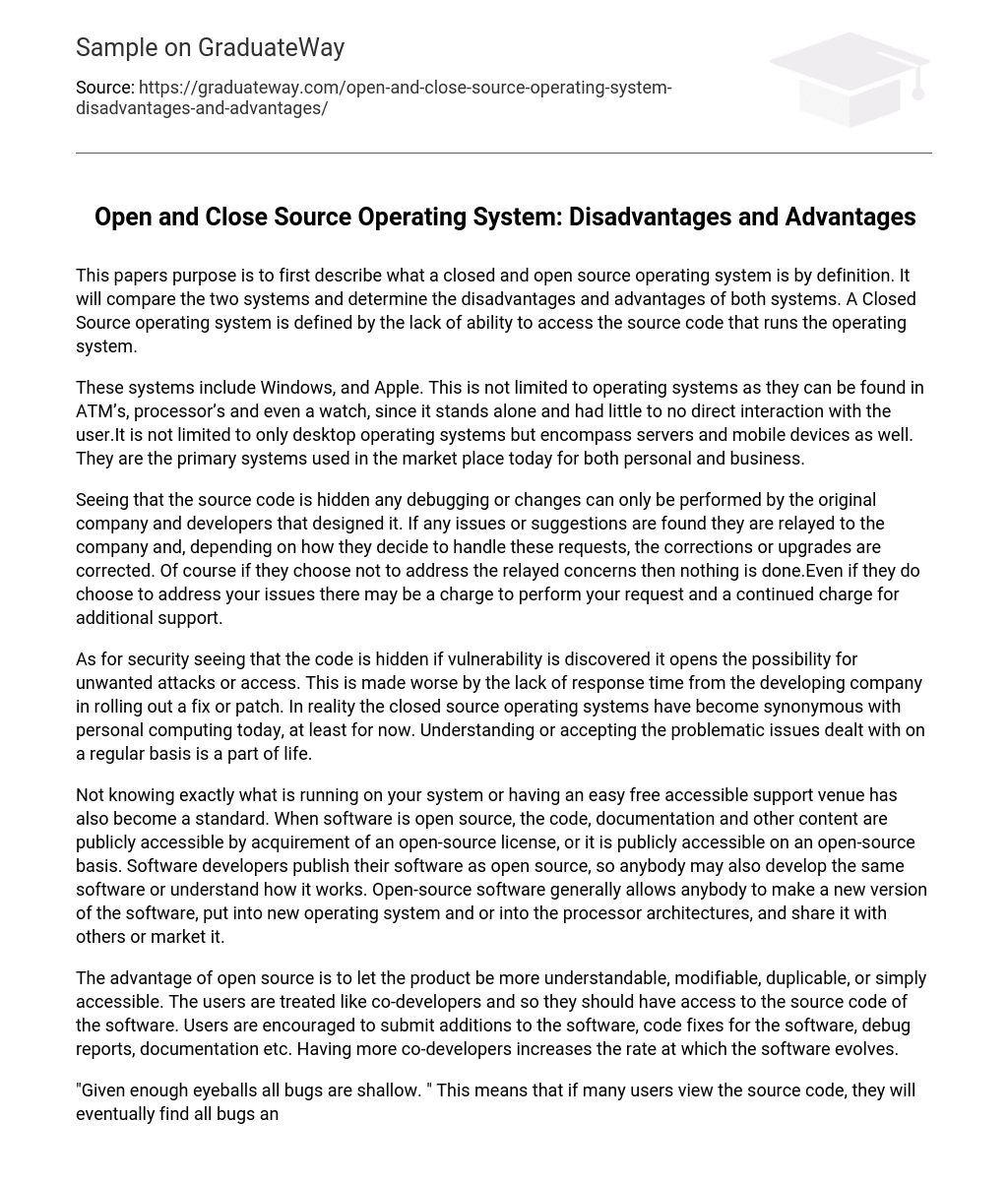This papers purpose is to first describe what a closed and open source operating system is by definition. It will compare the two systems and determine the disadvantages and advantages of both systems. A Closed Source operating system is defined by the lack of ability to access the source code that runs the operating system.
These systems include Windows, and Apple. This is not limited to operating systems as they can be found in ATM’s, processor’s and even a watch, since it stands alone and had little to no direct interaction with the user.It is not limited to only desktop operating systems but encompass servers and mobile devices as well. They are the primary systems used in the market place today for both personal and business.
Seeing that the source code is hidden any debugging or changes can only be performed by the original company and developers that designed it. If any issues or suggestions are found they are relayed to the company and, depending on how they decide to handle these requests, the corrections or upgrades are corrected. Of course if they choose not to address the relayed concerns then nothing is done.Even if they do choose to address your issues there may be a charge to perform your request and a continued charge for additional support.
As for security seeing that the code is hidden if vulnerability is discovered it opens the possibility for unwanted attacks or access. This is made worse by the lack of response time from the developing company in rolling out a fix or patch. In reality the closed source operating systems have become synonymous with personal computing today, at least for now. Understanding or accepting the problematic issues dealt with on a regular basis is a part of life.
Not knowing exactly what is running on your system or having an easy free accessible support venue has also become a standard. When software is open source, the code, documentation and other content are publicly accessible by acquirement of an open-source license, or it is publicly accessible on an open-source basis. Software developers publish their software as open source, so anybody may also develop the same software or understand how it works. Open-source software generally allows anybody to make a new version of the software, put into new operating system and or into the processor architectures, and share it with others or market it.
The advantage of open source is to let the product be more understandable, modifiable, duplicable, or simply accessible. The users are treated like co-developers and so they should have access to the source code of the software. Users are encouraged to submit additions to the software, code fixes for the software, debug reports, documentation etc. Having more co-developers increases the rate at which the software evolves.
“Given enough eyeballs all bugs are shallow. ” This means that if many users view the source code, they will eventually find all bugs and suggest how to fix them.Some users have advanced programming skills; each user’s machine provides an additional testing environment. This new testing environment offers that ability to find and fix a new bug.
The open source vs. closed source debate is sometimes heated. Making money through traditional methods, such as sale of the use of individual copies and patent royalty payment is more difficult and sometimes impractical with open-source software. Some closed-source advocates see open source software as damaging to the market of commercial software.





